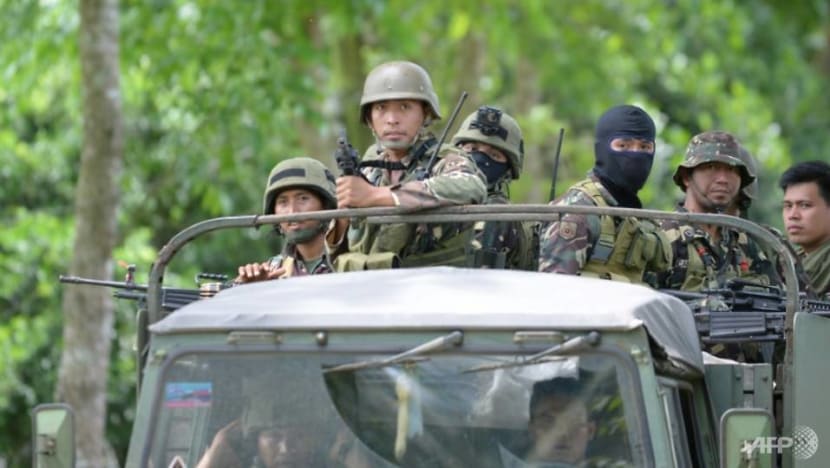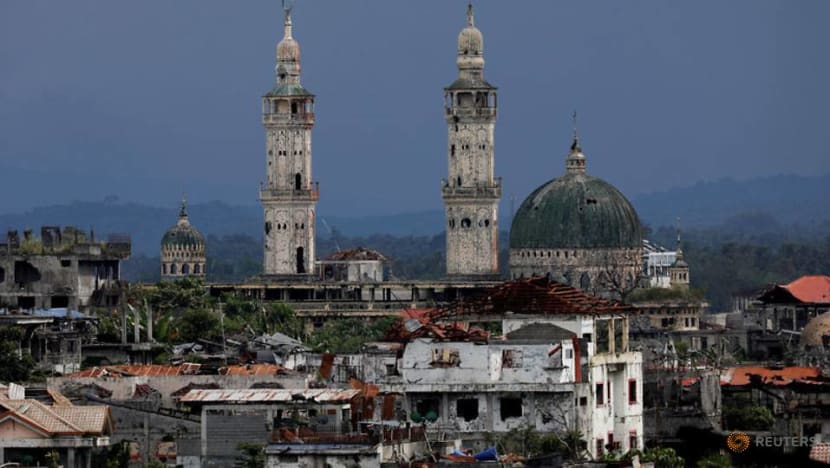commentary Commentary
Commentary: Why support for the Islamic State has persisted in Southeast Asia
Despite the IS’ losses in the Middle East, it has been able to recruit fighters and employ violent tactics in Southeast Asia, says Kenneth Yeo.

Imran Kassim is on trial for financing terrorism. (Photo: Facebook/Imran Kassim)
SINGAPORE: The Islamic State (IS) was severely weakened in 2019, following the fall of Baghouz, its last territorial stronghold in Iraq and Syria, in March, and the death of IS leader Abu Bakr al Baghdadi in October during a US special forces raid.
But the defeat of IS in the Middle East has not translated into a substantial diminution in support for the group in Southeast Asia.
READ: Commentary: Islamic State militant group ran an info war ‘like a viral marketing campaign’
Indeed, regional support for IS has been resilient, owing in large part to the fact that IS had established regional branches which operate independently and wage localised conflicts.
But even that modus operandi has morphed to embrace greater decentralisation in recent years.
The issue bears revisiting following the recent landmark prosecution of Imran Kassim on terrorism financing offenses in Singapore.
PERSISTENCE OF SOUTHEAST ASIAN OFFSHOOTS
Imran was sentenced to 33 months in prison for donating S$450 to IS on Oct 31, 2014, at the height of its caliphate operations in Iraq and Syria.
READ: Singaporean man jailed 33 months for financing terrorism by funding Islamic State
At that time, much of IS’ operations were confined to the Middle East. The group also gained huge global visibility after they drove Iraqi security forces out of Mosul in 2014 and established a territorial stronghold there, the first for an extremist terror group.
IS’ activities in Southeast Asia were initially driven by the Katibah Nusantara (Battalion of the Malay Archipelago) - a network of Southeast Asian IS fighters based in Iraq and Syria.
The group, which has since been inactive, had engaged in activities such as fundraising, propaganda dissemination, and recruiting Southeast Asian militants to migrate to the conflict zone. At least 1,000 Southeast Asians were estimated to have left to fight in the Syrian conflict, according to the Soufan Centre.

However, the IS’ shift to a decentralised structure in 2015 saw the establishment of multiple wilayah (provinces) across the globe.
In particular, the Mujahideen Indonesia Timur (MIT), an IS-linked militant network in Indonesia, declared its intention to establish a wilayah in the country’s Poso region.
However, such aspirations were crushed soon after, as the Indonesian authorities launched successful armed assaults against MIT forces in the forested, mountainous hideouts the group occupied in Central Sulawesi.
READ: The Big Read: Battered in the Middle East, Islamic State eyes Southeast Asia as next terrorism hotspot
This eventually led to the death of MIT leader Santoso in July 2016, with the IS subsequently turning its attention to neighbouring Philippines, which was suffering from deteriorating security conditions.
Isnilon Hapilon, who led a splinter network of the Abu Sayyaf, was declared leader of the Islamic State “East Asia Wilayah” (ISEA) prior to the Marawi siege in May 2017.
The subsequent five-month long siege witnessed the most devastating urban warfare in Southeast Asia which led to the internal displacement of over 350,000 mostly Muslim residents.
READ: Commentary: Why the use of women and children raises the stakes in the fight against terrorism
READ: Commentary: Has the war in Marawi killed the Philippines peace process?
Coming at a time after IS had just lost Mosul to coalition forces, the battle for Marawi reflected how the threat of extremism to territorial integrity could spread to other regions outside of the main Iraq and Syria theatre.
Being severely weakened in the Middle East may have provoked IS supporters to cast their eye elsewhere to establish a new base of operations. Southeast Asia is a particularly attractive target, given its huge Muslim population and the number of extremist radical groups that share a desire to establish a caliphate.

Indeed, following the defeat of IS in Marawi in October 2017, support for the group in the region has persisted.
This can be observed in the activity of pro-IS Telegram group channels and chats in Southeast Asia, after being kicked off Twitter and Facebook. At its peak, almost 4,000 propaganda messages were sent over a one-month period in 2019, in Malaysia, Indonesia and the Philippines.
READ: Commentary: Social media and live-streaming have created performance terrorism
READ: Commentary: Islamic State militant group ran an info war ‘like a viral marketing campaign’
The sheer volume of such messages demonstrates not just a worrisome level of online activity by IS supporters in the region, but also the huge challenge to counter-terrorism intelligence such private, encrypted channels pose.
Many supporters also no longer rely on IS leaders in Iraq and Syria for direction, using the name of IS instead to legitimise their own fight.
CONTINUED POTENCY OF IS
Beyond support in the digital domain, three trends demonstrate the continued potency of IS in the physical space: The sustained recruitment of militants, the involvement of foreign fighters, and the adoption of suicide bombing tactics in the Philippines.
The recruitment of militants persists in the region. Today, skirmishes between pro-IS groups and the Philippines’ authorities rage on in regions such as Sulu, Cotabato, and Maguindanao. Such exchanges have seen the mobilisation of up to 150 local and foreign militants since 2017.
Foreign fighters from the region and beyond also continued to enter the Philippines to support pro-IS groups.
Foreign fighters supplement the local fighting force in the defence of their territory. Experts have highlighted that more than 100 foreign fighters have entered Mindanao since the end of the Marawi siege.

The area remains attractive to pro-IS Southeast Asian militants, given its status as an alternate conflict theatre in the fight for IS’ brand of ideology and ease of access.
Known routes such as the Sulu Archipelago and the Sangihe Islands, through which funds, supplies, and foreign militants are smuggled, are difficult to regulate due to the long coastlines and the densely forested islets.
Extra-regional foreign fighters from the Middle East, North Africa, South Asia and Europe have also travelled or attempted to travel to Philippines to participate in the conflict.
These include Moroccan Abu Khatir al-Maghribi, the perpetrator of the Lamitan car bombing killing 10 in July 2018 and two Egyptians whose attempted suicide attacks were foiled by Filipino authorities in November 2019.
READ: Commentary: Islamic State brides and the meaning of citizenship
Finally, the reinvigorated adoption of suicide attacks is a cause for concern.
The willingness to conduct suicide operations demonstrates how entrenched the IS ideology is among some regional militant networks, how easy it can be to gain access to explosive materials and execute copycat acts of terror with instructions disseminated over encrypted platforms. Lone wolf attacks by radicalised individuals have become a real-and-present danger.
READ: Commentary: The secret group dynamics that fuel horrifying terror attacks
While suicide tactics are not new in Indonesia, planned suicide bombings in the Philippines were unprecedented before 2019. Many Muslim tribes in Mindanao espouse the idea that courageously dying in battle is more honourable than the cowardly act of terror suicide attacks.
In January 2019, however, the Philippines witnessed its first suicide attack in the country, marking a sea change in the counter-terrorism fight. Mooted emir of the IS in the Philippines, Hajan Sawadjaan is said to have recruited members of the Indonesian Jamaah Ansharut Daulah to conduct the suicide attack at a church in Jolo.
VIGILANCE KEY TO COUNTER-IS FIGHT
Ultimately, support for the IS in Southeast Asia is not solely determined by its strength in the Middle East.
Hence, the IS’ territorial and leadership losses in Iraq and Syria, while representing a blow to its global expansion aims, has not substantially tamped down militant activity in this region due to the group’s decentralised structure.

Going forward, we can expect financial support, propaganda, and aspiring militants wanting to join the IS to be directed not only to the Middle East but also active conflicts in Southeast Asia.
Imran’s case also presents a reminder that support for IS can take the seemingly innocuous form of monetary contributions, but in the wider context of the fight against terror in Southeast Asia, cannot be underestimated.
The key to meeting this challenge is sustained cooperation between authorities in the region to clamp down and keep up the pressure on known groups, and deal decisively with individual cases of radicalisation.
Citizens are also advised to remain vigilant and provide any information on suspected radicals to the relevant agencies for early intervention through rehabilitation, counselling, and social support.
Kenneth Yeo is a Research Analyst from the International Centre for Political Violence and Terrorism Research, a specialist centre of the S. Rajaratnam School of International Studies, Nanyang Technological University.














